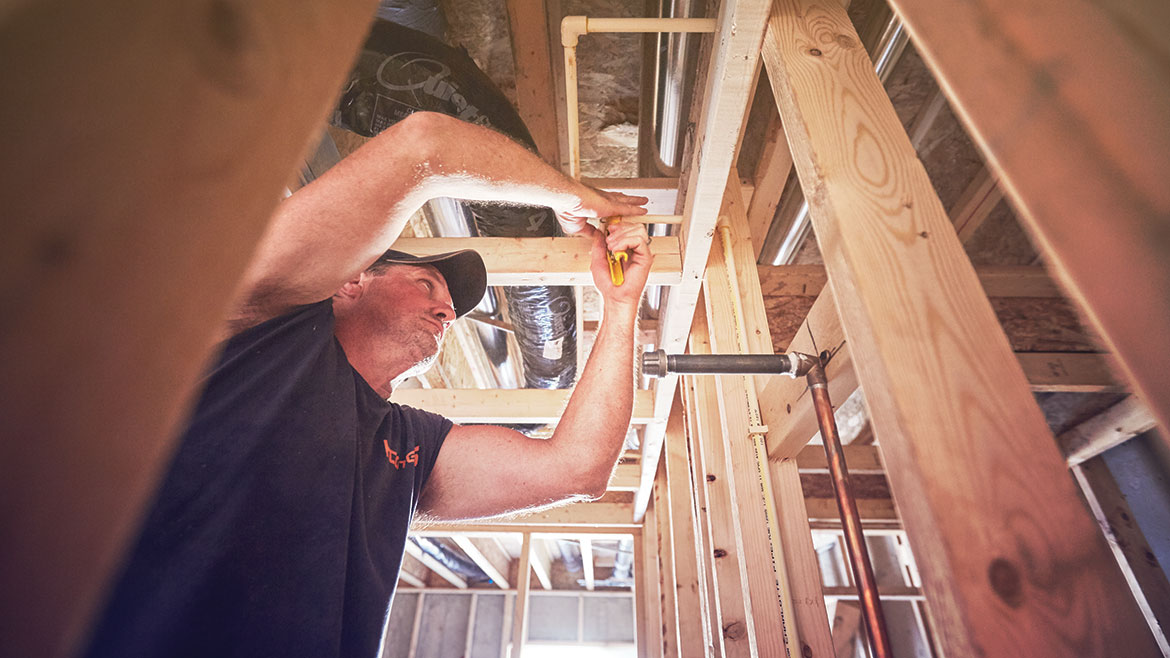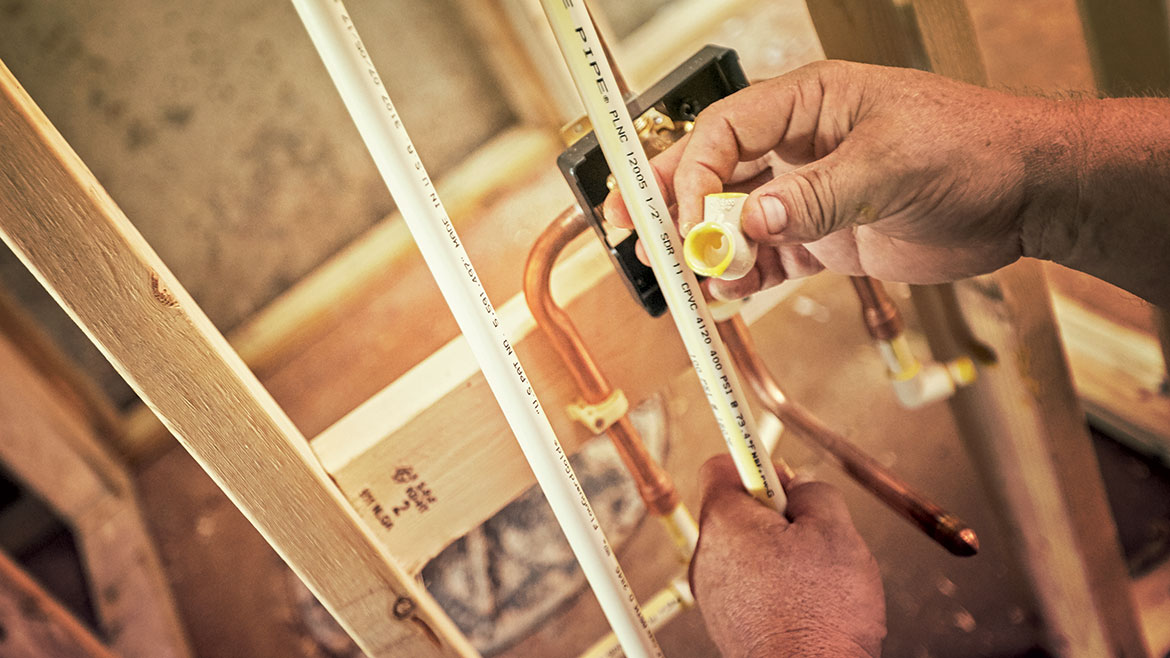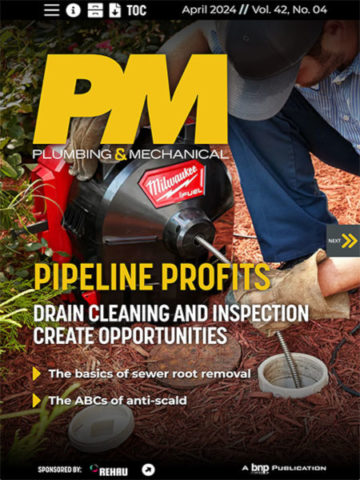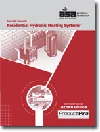How water chemistry impacts residential plumbing materials
Plumbers need to recognize that water chemistry varies from municipality to municipality.

Drinking water varies from municipality to municipality, and even within a municipality, water chemistry can change based on seasonal conditions, weather, expansion of the network and the water source being used. All photos courtesy of FlowGuard Gold.
A large national builder recently settled a class action lawsuit that claimed the plumbing materials used in a particular development failed prematurely because the pipes “were defective for the water conditions present.”
The claim wasn’t that the products were defective due to poor manufacturing. Instead, the suit claimed the code-compliant residential plumbing materials used weren’t suitable for the application —residential plumbing — due to incompatibility with local water conditions.
Builders and plumbers don’t always consider local water chemistry when selecting plumbing materials, perhaps operating on the assumption that there isn’t much difference in water chemistry across municipalities or that any approved material can handle all water chemistries. But both assumptions are incorrect and the relationship between water chemistry and plumbing materials deserves more consideration.
Why water chemistry changes
Most plumbers understand that the U.S. EPA National Primary Drinking Water Regulations establish standards that protect public health by limiting the levels of contaminants in drinking water, including microorganisms, organic and inorganic chemicals and disinfectants and their byproducts.
But how these standards are achieved varies from municipality to municipality, and even within a municipality, water chemistry can change based on seasonal conditions, weather, expansion of the network and the water source being used.
For example, expansion of the distribution network due to new development and urban sprawl can cause water utilities to add more or different types of disinfectant to ensure water continues to meet EPA standards as it travels farther. That can increase the concentration of disinfectants in homes closer to the treatment facility. Similarly, the concentration and type of disinfectant may be changed during warm months when conditions are more conducive for growth of microorganisms in water sources. In each case, the changes can negatively affect plumbing materials like metals and polyolefin plastics that are not inherently immune to damage from chlorinated water.
Another change plumbers and builders should be aware of is the evolution in the disinfectants being used in U.S. water treatment.

The expansion of the distribution network due to new development and urban sprawl can cause water utilities to add more or different types of disinfectant to ensure water continues to meet EPA standards as it travels farther. That can increase the concentration of disinfectants in homes closer to the treatment facility.
Evolving water chemistries
Free chlorine is still the most common disinfectant used in U.S. municipal water treatment. According to the most recent American Water Works Association Disinfection Survey Report published in 2018, 80% of respondents reported using free chlorine for primary disinfection and 65% for secondary disinfection.
Free chlorine is effective but is now known to produce more disinfection byproducts (DBPs) than alternative chemistries and these DBPs have been linked to liver damage and decreased nervous system activity. This potential link has caused some municipalities to look for ways to reduce their dependence on free chlorine.
One solution is to switch to chloramines for secondary disinfection. Chloramines produce fewer DBPs than chlorine and moving from chlorine to chloramines does not require changes to water treatment infrastructure, simplifying the transition. However, chloramines have been linked to increased incidence of pinhole leaks in copper pipes, making it a less than ideal substitute for free chlorine.
Another alternative is chlorine dioxide. In addition to being less likely to form DBPs than free chlorine, this disinfectant can remove iron and manganese, inactivate chlorine-resistant microorganisms, and has been shown to be highly effective at killing viruses. Chlorine dioxide also has a longer effective period than chlorine, which makes it attractive to large distribution networks and those that are expanding.
Transitioning to chlorine dioxide is more expensive than the shift to chloramines because chlorine dioxide must be manufactured on-site and that requires additional treatment infrastructure. However, based on its many benefits several newer facilities and those undergoing modernization are considering expanding the use of chlorine dioxide treatment.
As use of chlorine dioxide increases, water conditions can be expected to become more aggressive toward certain plumbing materials. The Plastics Pipe Institute’s (PPI) Technical Note 53 identifies water with an Oxidative Reduction Potential (ORP) above 825 mV as one of the factors that increase the likelihood of premature failure in PEX pipes. Chlorine dioxide by itself can drive ORPs above this threshold and multiple other factors contribute to ORP in the water supply. Where ORPs above 825 mV were thought to be rare at the time the relevant test standard, ASTM F2023, was published, they can be expected to become more common with increased use of chlorine dioxide.
PPI recently published Technical Note 67 which states that laboratory testing with copper, steel, PEX, PE-RT and PPR indicates that “chlorine dioxide has the potential to reduce the service life of most plumbing distribution materials to below normal expected lifetimes.” That same report states that “evaluation by PPI member firms indicates that chlorine dioxide is not known to be aggressive to CPVC at elevated temperatures of 200°F and below.”

Plumbers and builders should be aware of the evolution in the disinfectants being used in U.S. water treatment.
Well water compatibility
Not everyone is served by municipal water service — about 10% of the U.S. population relies on water from private wells that are not subject to the National Primary Drinking Water Regulations. Of course, this doesn’t mean water quality and safety can be ignored.
Well water still needs to be tested and treated and can be aggressive on its own depending on the source and mineral content. Treatment typically relies on chlorine to ensure water safety and overtreating can damage plumbing materials vulnerable to chlorine degradation.
The potential for biofilm growth if water is not treated properly should also be considered. Here again, the plumbing material plays a role. New copper pipes have the lowest biofilm formation potential of the leading residential plumbing systems, but copper becomes more hospitable to biofilm as the pipe ages and the interior surface of the pipes becomes rougher. In a controlled study by international testing and research institute Kiwa, CPVC had the lowest biofilm formation potential among plastic piping systems.
Choosing water-compatible plumbing materials
Plumbers don’t need to become experts in water chemistry, but they do need to recognize that water chemistry varies from municipality to municipality and is constantly changing both in the concentration of disinfectants and the type of disinfectant used.
Even knowing that, however, there is really no way for plumbers to selectively match plumbing materials to local water chemistry. Even if they did the research to understand local water chemistry, there is no guarantee that chemistry won’t change significantly in the future.
The only way to ensure plumbing materials are compatible with local water chemistry is to select a material that will not corrode or degrade due to contact with drinking water treated with chlorine, chloramines and chlorine dioxide at any level within the National Primary Drinking Water Regulations.
Looking for a reprint of this article?
From high-res PDFs to custom plaques, order your copy today!









